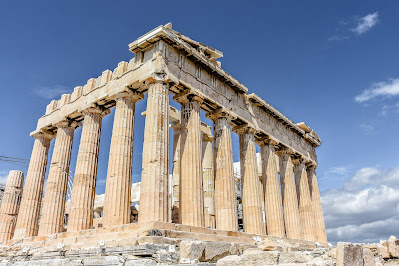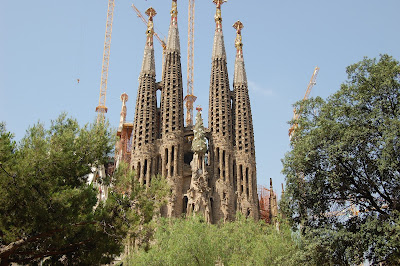Tourist Attractions In Europe Must to Visited
Must-Visit Tourist Attractions in Europe
Europe is a continent with a rich cultural heritage, stunning landscapes, and numerous iconic landmarks. With so many destinations to choose from, it can be overwhelming to plan a trip. In this article, we will explore some of the must-visit tourist attractions in Europe to help you plan your next adventure.
The Eiffel Tower, Paris, France
The Eiffel Tower is one of the most recognizable landmarks in the world and a must-visit attraction in Paris. Built in 1889, this iron lattice tower stands at 324 meters tall and offers breathtaking views of the city from its observation deck. Visitors can take the elevator or climb the stairs to reach the top and enjoy the stunning panoramic views of Paris.
The Eiffel Tower: A Must-Visit Attraction in Paris
The Eiffel Tower is one of the most iconic landmarks in the world and a must-visit attraction in Paris, France. Standing at 324 meters tall, this iron lattice tower was built in 1889 and offers breathtaking views of the city from its observation deck. In this article, we will explore the history and significance of the Eiffel Tower and what you can expect when visiting this iconic attraction.
The History of the Eiffel Tower
The Eiffel Tower was built by Gustave Eiffel for the 1889 World's Fair, which celebrated the 100th anniversary of the French Revolution. It was originally intended to be a temporary structure, but its popularity and usefulness as a communications tower ensured its permanent place in the Parisian skyline.
The tower's construction took just over two years and involved the use of over 18,000 iron pieces and 2.5 million rivets. At the time of its completion, it was the tallest man-made structure in the world, a title it held until the Chrysler Building was built in New York City in 1930.
Visiting the Eiffel Tower
Visitors to the Eiffel Tower can take the elevator or climb the stairs to reach the observation deck. The tower has three levels, with the first two offering restaurants and souvenir shops, and the third providing a panoramic view of the city.
The view from the top of the tower is breathtaking, with sights such as the Arc de Triomphe, the Champs-Élysées, and the Seine River visible from above. Visitors can also see other famous landmarks, such as Notre-Dame Cathedral, the Louvre Museum, and the Montmartre district.
Tips for Visiting the Eiffel Tower
To make the most of your visit to the Eiffel Tower, it's recommended to book tickets in advance, as lines can be long during peak travel seasons. Visitors should also plan to arrive early in the morning or late in the afternoon to avoid crowds and enjoy the tower's peaceful ambiance.
Additionally, visitors should be prepared for security checks and bag searches before entering the tower. Food and drinks are not allowed inside, but there are several restaurants and cafes on the first two levels.
Eiffel Tower is a must-visit attraction in Paris, offering stunning views of the city and a glimpse into the city's rich history and culture. With its impressive architecture and its significance as a symbol of French engineering and innovation, the Eiffel Tower is sure to leave a lasting impression on visitors from all over the world.
The Colosseum, Rome, Italy
The Colosseum is an iconic symbol of Rome and one of the most visited tourist attractions in Europe. Built over 2,000 years ago, this ancient amphitheater could seat up to 50,000 people and was used for gladiatorial contests and public spectacles. Visitors can take a guided tour to learn about the history of the Colosseum and its significance in Roman culture.
The Colosseum: Discovering Ancient History in Rome
The Colosseum, located in the heart of Rome, Italy, is one of the most iconic and recognizable landmarks in the world. This ancient amphitheater, built in 80 AD, has a rich history and has become a must-visit attraction for tourists from around the world. In this article, we will explore the history and significance of the Colosseum, and what you can expect when visiting this ancient masterpiece.
The History of the Colosseum
The Colosseum was commissioned by Emperor Vespasian in 70 AD and was completed in 80 AD by his son, Titus. The amphitheater was built to host gladiatorial contests and public spectacles, such as animal hunts and mock sea battles, which were popular among the ancient Romans.
The Colosseum is an engineering marvel, with a capacity of 50,000 to 80,000 spectators, and its construction involved the use of over 100,000 cubic meters of stone and concrete. It remained in use for over 500 years until it was damaged by earthquakes and looting in the Middle Ages.
Visiting the Colosseum
Visitors to the Colosseum can explore the amphitheater's underground chambers and upper levels, and imagine the excitement and brutality of the ancient games. There are also exhibits showcasing the Colosseum's history, architecture, and its role in ancient Roman society.
Visitors can also take a guided tour of the Colosseum and learn more about the site's fascinating history. The tour includes access to the Colosseum's restricted areas, such as the underground tunnels where the gladiators and animals were kept.
Tips for Visiting the Colosseum
To make the most of your visit to the Colosseum, it's recommended to book tickets in advance, as lines can be long during peak travel seasons. Visitors should also plan to arrive early in the morning or late in the afternoon to avoid crowds and enjoy the site's peaceful ambiance.
Additionally, visitors should be prepared for security checks and bag searches before entering the Colosseum. It's also important to wear comfortable shoes as there are many stairs to climb and uneven surfaces to navigate.
the Colosseum is a must-visit attraction in Rome, offering a glimpse into ancient Roman history and culture. With its impressive architecture and its significance as a symbol of Roman engineering and innovation, the Colosseum is sure to leave a lasting impression on visitors from all over the world.
The Acropolis, Athens, Greece
The Acropolis is a UNESCO World Heritage Site and a must-visit attraction in Athens. This ancient citadel dates back to the 5th century BC and is home to several iconic structures, including the Parthenon, the Erechtheion, and the Temple of Athena Nike. Visitors can explore the ruins and learn about the history of ancient Athens.
Discovering the Ancient Beauty of the Acropolis in Athens, Greece
The Acropolis, located in Athens, Greece, is one of the world's most iconic landmarks and a testament to ancient Greek architecture and culture. In this article, we will explore the history and significance of the Acropolis, and what you can expect when visiting this incredible site.
The History of the Acropolis
The Acropolis is a UNESCO World Heritage Site that has been inhabited since prehistoric times. It was the site of many ancient Greek temples, including the famous Parthenon, which was completed in 438 BC.
The Acropolis was a religious and cultural center for ancient Greeks, and it served as the city's fortress in times of war. Over the years, the Acropolis has been damaged by earthquakes and wars, but extensive restoration work has been undertaken to preserve the site.
Visiting the Acropolis
Visitors to the Acropolis can explore the ancient temples, including the Parthenon, the Erechtheion, and the Propylaea, as well as the ancient theater of Dionysus. The Acropolis Museum, located nearby, showcases artifacts and exhibits related to the site's history and significance.
Visitors should plan to arrive early in the morning or late in the afternoon to avoid crowds and enjoy the site's peaceful ambiance. It's also recommended to wear comfortable shoes and bring sunscreen and water, as there can be a lot of walking and the sun can be intense in the summer months.
Tips for Visiting the Acropolis
To make the most of your visit to the Acropolis, it's recommended to book tickets in advance, as lines can be long during peak travel seasons. Visitors should also be prepared for security checks and bag searches before entering the site.
Guided tours are available and can provide visitors with a deeper understanding of the site's history and significance. The tours also offer access to areas of the site that are not open to the general public.
the Acropolis is a must-visit attraction in Athens, Greece, offering a glimpse into ancient Greek history and culture. With its impressive architecture and its significance as a symbol of Greek civilization and democracy, the Acropolis is sure to leave a lasting impression on visitors from all over the world.
The Sagrada Familia, Barcelona, Spain
The Sagrada Familia is a stunning basilica and one of the most famous landmarks in Barcelona. Designed by the famous architect Antoni Gaudi, this unfinished masterpiece has been under construction since 1882 and is expected to be completed in 2026. Visitors can admire the intricate details of the basilica's facades and interior, which are inspired by natural forms.
The Sagrada Familia is one of the most famous and breathtaking landmarks in Barcelona, Spain. This stunning basilica is an architectural masterpiece and an awe-inspiring sight to behold, drawing millions of visitors from around the world every year. In this article, we will explore the history, design, and significance of the Sagrada Familia, as well as its impact on the city of Barcelona and the world.
History
The Sagrada Familia was designed by the legendary Spanish architect Antoni Gaudi in the late 19th century. Gaudi devoted the last years of his life to this project, working on it for over 40 years until his death in 1926. The basilica was originally intended to be a simple church, but Gaudi's vision and creativity soon transformed it into a grand masterpiece of Gothic and Art Nouveau architecture.
Design
The Sagrada Familia is a truly unique structure, combining a variety of architectural styles and motifs to create a stunning and distinctive design. Its soaring towers, intricate facades, and ornate details are a testament to Gaudi's vision and skill as an architect. One of the most striking features of the basilica is its use of light, with stained glass windows and skylights creating a colorful and mesmerizing interior.
Significance
The Sagrada Familia is not only an architectural masterpiece, but also a symbol of the city of Barcelona and a cultural icon of Spain. It has been recognized as a UNESCO World Heritage Site and is one of the most visited tourist attractions in the country. The basilica's construction has also had a significant impact on the local community, providing jobs and opportunities for artists and craftsmen.
The Sagrada Familia has had a profound impact on the world of architecture and design, inspiring countless artists and designers with its innovative and creative approach. Its unique blend of Gothic and Art Nouveau styles has influenced numerous other buildings and structures around the world. In addition, the basilica's ongoing construction has become a symbol of perseverance and dedication, inspiring people around the world to pursue their own dreams and passions.
The Swiss Alps, Switzerland
The Swiss Alps are a must-visit destination for nature lovers and adventure seekers. This stunning mountain range offers breathtaking views, pristine lakes, and world-class ski resorts. Visitors can hike through the alpine meadows, take a scenic train ride, or try their hand at skiing or snowboarding.
The Swiss Alps are one of the most awe-inspiring natural wonders in the world. Located in Switzerland, this majestic mountain range draws millions of visitors every year with its breathtaking views, outdoor activities, and charming Alpine towns. In this article, we will explore the history, geography, and attractions of the Swiss Alps, as well as why they are a must-see destination for anyone visiting Switzerland.
History
The Swiss Alps have a long and storied history, dating back to the Ice Age when glaciers carved out the valleys and peaks that we see today. The region has been inhabited for thousands of years, with various cultures and civilizations leaving their mark on the landscape. Today, the Swiss Alps are known as one of the premier outdoor recreation destinations in the world, attracting skiers, hikers, and climbers from around the globe.
Geography
The Swiss Alps cover a vast area, spanning over 1200 kilometers and including dozens of peaks that rise over 4,000 meters. The highest peak in the range is the famous Matterhorn, which stands at a towering 4,478 meters. The region is also home to numerous glaciers, lakes, and rivers, creating a stunning natural landscape that is unlike anywhere else on earth.
Attractions
The Swiss Alps are home to a wide variety of attractions and activities, from skiing and snowboarding in the winter to hiking, climbing, and mountain biking in the summer. Some of the most popular ski resorts in the world can be found in the Swiss Alps, including Zermatt, St. Moritz, and Verbier. In addition, there are numerous charming Alpine towns and villages that offer a glimpse into Swiss mountain culture, such as Interlaken, Grindelwald, and Lauterbrunnen.
Why Visit?
There are many reasons why the Swiss Alps should be on your bucket list of travel destinations. The stunning natural scenery alone is reason enough to visit, with towering peaks, crystal-clear lakes, and cascading waterfalls creating an unforgettable landscape. In addition, the region offers a wide range of outdoor activities that can be enjoyed year-round, making it an ideal destination for adventure-seekers and nature lovers. And, of course, there is the unique culture and cuisine of the Swiss Alps, which is unlike anything else in the world.
The Swiss Alps are a true wonder of nature, offering breathtaking views, endless outdoor activities, and a unique cultural experience that is sure to leave a lasting impression. Whether you are a seasoned mountaineer or simply a traveler looking for a stunning and unforgettable destination, the Swiss Alps are a must-see destination that should be at the top of your travel list.
Europe is home to numerous must-visit tourist attractions, each with its own unique history, culture, and natural beauty. Whether you're interested in exploring ancient ruins, iconic landmarks, or stunning landscapes, there's something for everyone in Europe. With its rich cultural heritage and stunning scenery, it's no wonder that Europe is one of the most popular destinations for travelers from all over the world.



